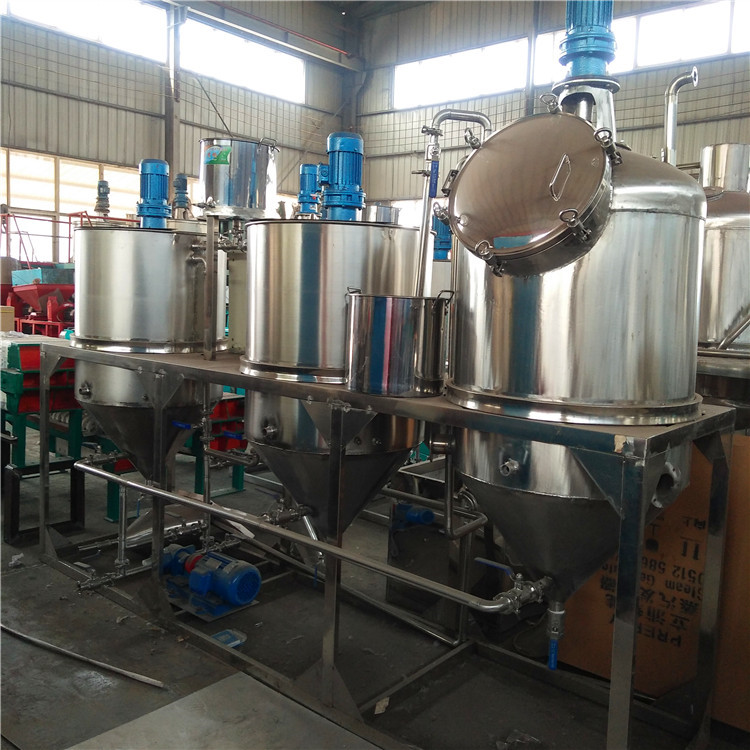The small refining equipment is composed of refining tank, decolorizing tank and filter, oil pump and electric motor control system, which can realize the functions of crude oil degumming, deacidification, drying and decolorization.
In order to meet the needs of small-scale oil mills, a complete set of units for oil refining in small oil mills was successfully developed to realize the integrated flow operation of dephosphorization, degumming, deacidification, dehydration and decolorization, thus realizing the miniaturization of oil refining and the civilianization of industrial oil refining. The oil refined by this oil refining equipment can be directly filled and sold!
Operating procedures:
Crude oil--degumming (washing)--deacidification (alkali refining)--decolorization (white clay adsorption)--dehydration (heating and drying)--product oil

Small-scale refining equipment uses crude oil (peanut oil, rapeseed oil, tea seed oil, soybean oil, sunflower seed oil, flax oil, walnut oil, sesame oil and other edible oils) for hydration, degumming, deacidification, decolorization, and deodorization by heating and stirring.
1. Hydration degumming, hydration degumming is the use of the hydrophilicity of peptic impurities such as phospholipids. A certain amount of water or diluted electrolyte solution is added to the crude oil under stirring to make the peptic impurities in the crude oil swell and agglomerate. A degumming method that separates and removes. In the process of hydration and degumming, the substances that can be aggregated and precipitated are mainly phospholipids, in addition to proteins, mucus and trace metal ions that are combined with phospholipids.
2. Alkali refining and deacidification, the unrefined crude oil contains a certain amount of free fatty acids, and the process of removing free fatty acids in grease is called deacidification. Methods of deacidification include alkali refining, distillation, solvent extraction and esterification. The most widely used in industrial production are alkali refining and steam distillation (that is, physical refining).
3. Decolorization of grease, adsorption and decolorization of grease, is to use certain substances with strong selective adsorption of pigments (such as bleaching earth, activated clay, activated carbon, etc.) to absorb pigments and other impurities in the grease under certain conditions. So as to achieve the purpose of decolorization. The grease treated by the adsorbent not only achieves the purpose of improving the oil color and removing the gum, but also can effectively remove some trace metal ions in the grease and some substances that can cause the hydrogenation catalyst poisoning, thereby further refining the grease (Hydrogenation, deodorization) Provide good conditions.
4. Oil deodorization. Oil deodorization is a process that uses the difference between the volatilization of odorous substances in oils and fatty acid triglycerides, and uses steam distillation to deodorize substances under high temperature and vacuum conditions.
Treatment effect: The grease processed by the refining machine has a transparent color, no precipitation after long-term storage, no foaming, no oily smoke in the pot, and can be directly filled and sold. It is suitable for processing supplied materials and small-scale grease processing plants.
Copyright © Henan Zhongxing Grain And Oil Machinery Co.,Ltd. All Rights Reserved. Powered by MetInfo